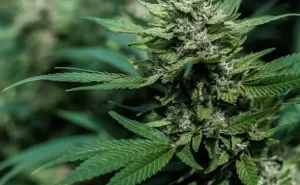The Science Behind Cannabis: A Comprehensive Review of Pain Management Solutions
Understanding the Impact of Chronic Pain
Chronic pain, affecting over 20% of adults worldwide, is more than a physical ailment—it is a complex and often life-altering condition. From musculoskeletal disorders to neuropathic pain syndromes, chronic pain disrupts daily functioning, erodes mental health, and imposes a significant economic burden on healthcare systems. Traditional pain management options, while effective for some, frequently fall short. Opioids, once the cornerstone of pain relief, are now scrutinized for their addictive potential and side effects. NSAIDs, another common choice, carry risks of gastrointestinal and cardiovascular complications when used long-term.
The Rise of Alternative Treatments
The limitations of conventional therapies have prompted increased interest in alternative treatments, including medical cannabis. Historically revered for its medicinal properties, cannabis is now undergoing a scientific renaissance, driven by its interaction with the body’s endocannabinoid system—a critical network that regulates pain, mood, and immune function. Unlike many traditional painkillers, cannabis offers a multifaceted approach, addressing not only pain but also its associated symptoms, such as sleep disturbances and anxiety.
Exploring Cannabis in Pain Management
In this article, we explore the role of cannabis in chronic pain management, reviewing its mechanisms, clinical evidence, and practical applications for long-term care. By integrating the latest research with actionable strategies, this discussion aims to empower readers to make informed decisions about cannabis as a therapeutic option.
Medical Research and Evidence-Based Insights
The potential of cannabis for managing chronic pain is supported by a wealth of research, highlighting its ability to address multiple dimensions of pain.
Understanding Mechanisms of Action
Cannabinoids like THC and CBD interact with CB1 and CB2 receptors in the endocannabinoid system. CB1 receptors, concentrated in the central nervous system, modulate pain perception, while CB2 receptors, located in immune cells, help reduce inflammation. Cannabis also influences serotonin receptors, potentially enhancing mood and alleviating pain-related depression.
Reviewing Clinical Evidence
A systematic review published in Pain (2020) confirmed that cannabis significantly reduces pain intensity in conditions like neuropathy, fibromyalgia, and arthritis. A study in The Clinical Journal of Pain (2019) showed that patients using cannabis reported improved sleep quality, reduced opioid dependence, and enhanced overall well-being. Research in Addiction Science & Clinical Practice (2022) highlighted the opioid-sparing effects of cannabis, with patients reducing opioid use by an average of 30% after initiating cannabis therapy.
Patient-Focused Benefits
Beyond pain relief, cannabis addresses secondary symptoms like insomnia and anxiety, which often exacerbate chronic pain. CBD, in particular, has been shown to have anxiolytic and anti-inflammatory effects, offering a non-intoxicating option for patients.
Best Practices for Long-Term Management
The integration of cannabis into chronic pain management requires a personalized and evidence-based approach. Below are key considerations for effective long-term care:
Creating Individualized Treatment Plans
Start low, go slow: Begin with low doses and gradually adjust based on efficacy and tolerance. For many, a balanced THC-to-CBD ratio offers optimal results. Strains and products should be tailored to patient needs. For example: High-CBD products for daytime use to reduce inflammation and anxiety without psychoactive effects. THC-dominant strains for nighttime use to enhance sleep and provide deep pain relief.
Choosing Delivery Methods
Inhalation (vaping or smoking): Provides immediate relief, suitable for acute pain episodes. Edibles and tinctures: Offer long-lasting effects for sustained pain management. Topicals: Focus on localized pain without systemic effects.
Implementing Holistic Integration
Cannabis works best when combined with complementary therapies: Physical therapy: Enhances mobility and reduces strain on affected areas. Psychological support through cognitive-behavioral therapy (CBT) can address the mental health impacts of chronic pain. Dietary changes: Incorporating anti-inflammatory foods like turmeric, berries, and leafy greens amplifies cannabis’s therapeutic effects.
Maintaining Regular Monitoring
Continuous evaluation by healthcare professionals ensures that the treatment remains effective and safe. Adjustments may involve altering dosages, switching product types, or integrating new therapies.
Addressing Challenges and Considerations
While cannabis offers significant promise, it is not a panacea. Potential challenges include: Side effects from THC including psychoactivity, dry mouth, and dizziness are common but manageable with appropriate dosing. Legal Barriers: Access to medical cannabis varies by jurisdiction, with some regions imposing restrictions that complicate patient care. Product Quality: Variability in cannabis products underscores the importance of choosing lab-tested and reputable sources. Patient education and provider training are essential to overcoming these challenges, ensuring that cannabis is used effectively and responsibly.
Looking to the Future
Cannabis is reshaping the landscape of chronic pain management, offering a versatile and holistic solution for patients who struggle with conventional therapies. By targeting pain pathways, reducing inflammation, and addressing related symptoms like insomnia and anxiety, cannabis provides comprehensive relief. As ongoing research continues to illuminate its potential, medical cannabis is poised to become a cornerstone of personalized, long-term pain management strategies.
Research References
Häuser, W., et al. (2021). “Cannabis-based medicines for chronic neuropathic pain.” Pain Reports.
Whiting, P. F., et al. (2015). “Cannabinoids for medical use: A systematic review and meta-analysis.” JAMA.
Boehnke, K. F., et al. (2020). “Cannabis use to manage pain and promote sleep.” Sleep Health.
Vigil, J. M., et al. (2022). “Reducing opioid dependency with medical cannabis: A meta-analysis.” Addiction Science & Clinical Practice.













